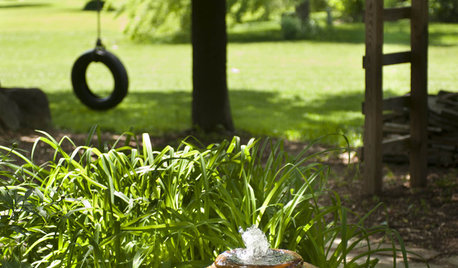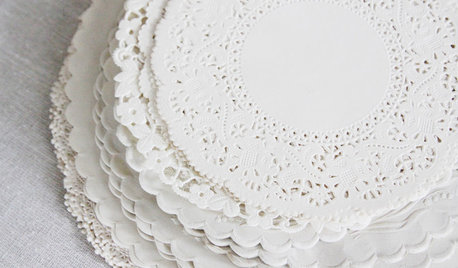No more need for bagging - no more need for pesticides
Axel
13 years ago
Related Stories

DECORATING GUIDESMore Is More: The 10 Tenets of Maximalist Style
Ready to join the school of over-the-top design? Learn how to embrace excess in your interiors
Full Story
STORAGEClosets Too Small? 10 Tips for Finding More Wardrobe Space
With a bit of planning, you can take that tiny closet from crammed to creatively efficient
Full Story
LANDSCAPE DESIGNNatural Swimming Pools: More Beauty, No Chemicals
Keep your skin and the environment healthy with a pool that cleans itself, naturally
Full Story
FEEL-GOOD HOME10 Tips for a More Peaceful Home
Turn your everyday living space into a serene retreat by clearing visual distractions, softening your lighting and more
Full Story
KITCHEN DESIGNTrick Out Your Kitchen Backsplash for Storage and More
Free up countertop space and keep often-used items handy by making your backsplash more resourceful
Full Story
HOUSEKEEPINGThree More Magic Words to Help the Housekeeping Get Done
As a follow-up to "How about now?" these three words can help you check more chores off your list
Full Story
GARDENING AND LANDSCAPINGHow to Give Your Garden More Soul
Feel more at home in your garden by giving it deep, personal meaning
Full Story
GREAT HOME PROJECTSHow to Add Toe Kick Drawers for More Storage
Great project: Install low-lying drawers in your kitchen or bath to hold step stools, pet bowls, linens and more
Full Story
VALENTINE’S DAYHandmade Home: Doilies for More Than Valentines
Make instant stencils, banners, gift packaging and more from doilies old and new
Full Story
EARTH DAY5 Ideas for a More Earth-Friendly Garden
Consider increasing the size of garden beds, filtering rainwater and using plants to reduce energy use
Full StoryMore Discussions








olpea
glenn_russell
Related Professionals
Tempe Landscape Architects & Landscape Designers · Wrentham Landscape Architects & Landscape Designers · Prairie Ridge Landscape Architects & Landscape Designers · Burlington Landscape Contractors · Commack Landscape Contractors · El Mirage Landscape Contractors · Gloucester Landscape Contractors · Lyndhurst Landscape Contractors · Midland Landscape Contractors · Newnan Landscape Contractors · Salem Landscape Contractors · Thonotosassa Landscape Contractors · West Chicago Landscape Contractors · Golden Valley Landscape Contractors · Merrifield Landscape Contractorsglib
donnieappleseed
franktank232
AxelOriginal Author
Suzi AKA DesertDance So CA Zone 9b
Scott F Smith
fruitnut Z7 4500ft SW TX
franktank232
bagger1
donnieappleseed
briergardener_gw
djofnelson
olpea
djofnelson
djofnelson
olpea
charleslou23
nc_orchard
foolishpleasure
alan haigh
myk1
fruitnut Z7 4500ft SW TX
campv 8b AZ
foolishpleasure
alan haigh
AxelOriginal Author
garedneck
alan haigh
briergardener_gw
SoTX